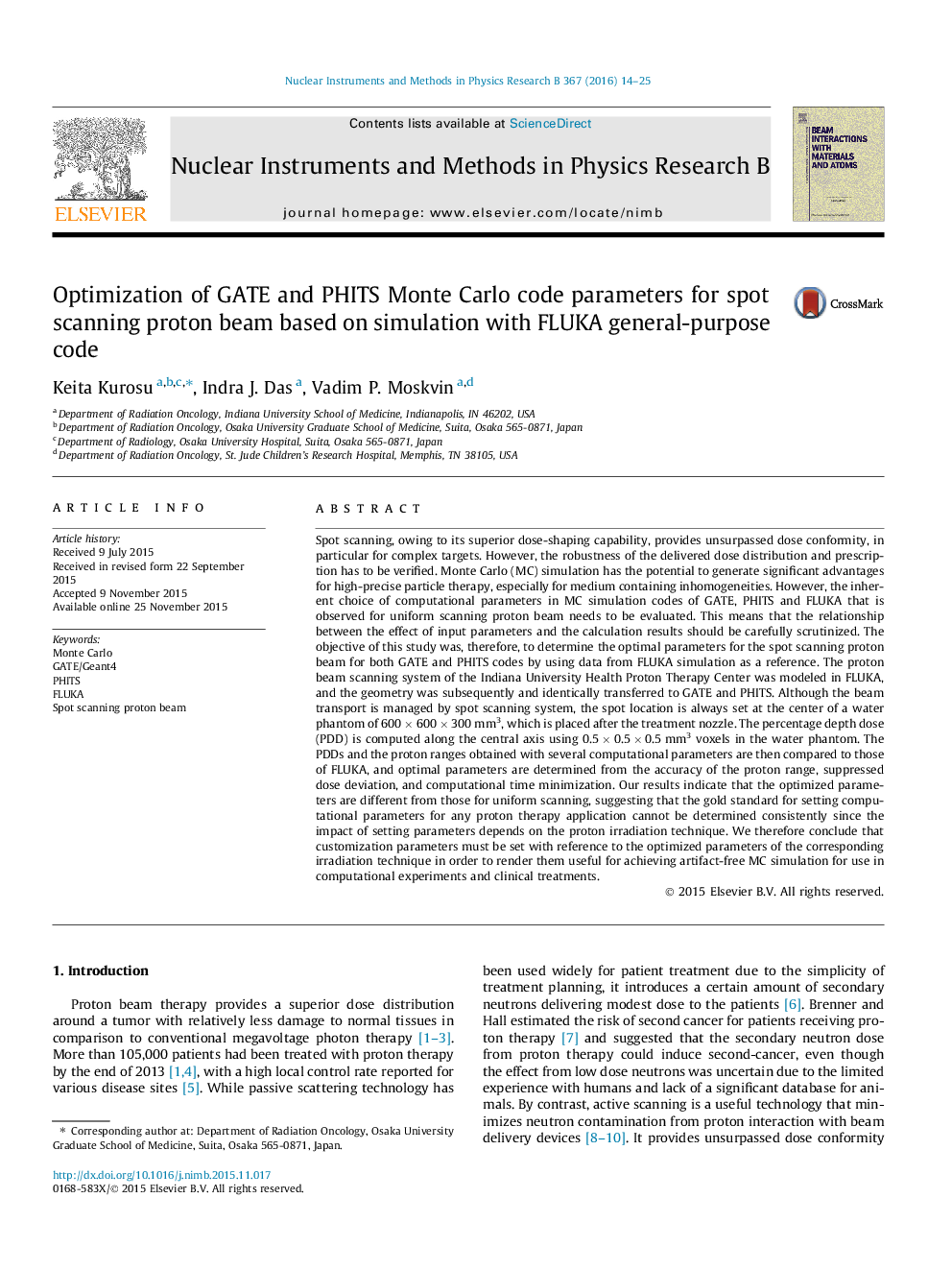| کد مقاله | کد نشریه | سال انتشار | مقاله انگلیسی | نسخه تمام متن |
|---|---|---|---|---|
| 1682048 | 1518654 | 2016 | 12 صفحه PDF | دانلود رایگان |
عنوان انگلیسی مقاله ISI
Optimization of GATE and PHITS Monte Carlo code parameters for spot scanning proton beam based on simulation with FLUKA general-purpose code
دانلود مقاله + سفارش ترجمه
دانلود مقاله ISI انگلیسی
رایگان برای ایرانیان
کلمات کلیدی
موضوعات مرتبط
مهندسی و علوم پایه
مهندسی مواد
سطوح، پوششها و فیلمها
پیش نمایش صفحه اول مقاله

چکیده انگلیسی
Spot scanning, owing to its superior dose-shaping capability, provides unsurpassed dose conformity, in particular for complex targets. However, the robustness of the delivered dose distribution and prescription has to be verified. Monte Carlo (MC) simulation has the potential to generate significant advantages for high-precise particle therapy, especially for medium containing inhomogeneities. However, the inherent choice of computational parameters in MC simulation codes of GATE, PHITS and FLUKA that is observed for uniform scanning proton beam needs to be evaluated. This means that the relationship between the effect of input parameters and the calculation results should be carefully scrutinized. The objective of this study was, therefore, to determine the optimal parameters for the spot scanning proton beam for both GATE and PHITS codes by using data from FLUKA simulation as a reference. The proton beam scanning system of the Indiana University Health Proton Therapy Center was modeled in FLUKA, and the geometry was subsequently and identically transferred to GATE and PHITS. Although the beam transport is managed by spot scanning system, the spot location is always set at the center of a water phantom of 600Â ÃÂ 600Â ÃÂ 300Â mm3, which is placed after the treatment nozzle. The percentage depth dose (PDD) is computed along the central axis using 0.5Â ÃÂ 0.5Â ÃÂ 0.5Â mm3 voxels in the water phantom. The PDDs and the proton ranges obtained with several computational parameters are then compared to those of FLUKA, and optimal parameters are determined from the accuracy of the proton range, suppressed dose deviation, and computational time minimization. Our results indicate that the optimized parameters are different from those for uniform scanning, suggesting that the gold standard for setting computational parameters for any proton therapy application cannot be determined consistently since the impact of setting parameters depends on the proton irradiation technique. We therefore conclude that customization parameters must be set with reference to the optimized parameters of the corresponding irradiation technique in order to render them useful for achieving artifact-free MC simulation for use in computational experiments and clinical treatments.
ناشر
Database: Elsevier - ScienceDirect (ساینس دایرکت)
Journal: Nuclear Instruments and Methods in Physics Research Section B: Beam Interactions with Materials and Atoms - Volume 367, 15 January 2016, Pages 14-25
Journal: Nuclear Instruments and Methods in Physics Research Section B: Beam Interactions with Materials and Atoms - Volume 367, 15 January 2016, Pages 14-25
نویسندگان
Keita Kurosu, Indra J. Das, Vadim P. Moskvin,